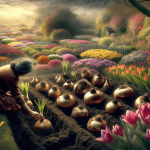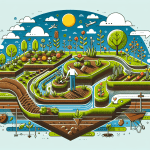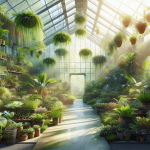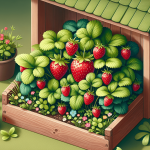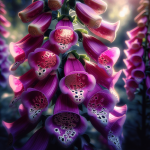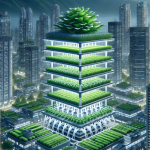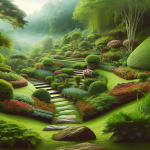This post may contain affiliate links. As an Amazon Associate, we may earn commissions from qualifying purchases.
Imagine transforming your cozy little outdoor space into a lush, inviting garden retreat where every inch is ingeniously utilized. In this article, you’ll discover some unique garden design ideas specifically tailored for small spaces. From vertical gardening tricks that draw the eye upward to clever uses of containers that add depth and variety, these tips will help you craft a vibrant oasis that feels both spacious and intimate. Whether you’re working with a tiny balcony, a modest backyard, or even just a windowsill, prepare to be inspired by creative ways to bring your green dreams to life, no matter the size of your canvas.
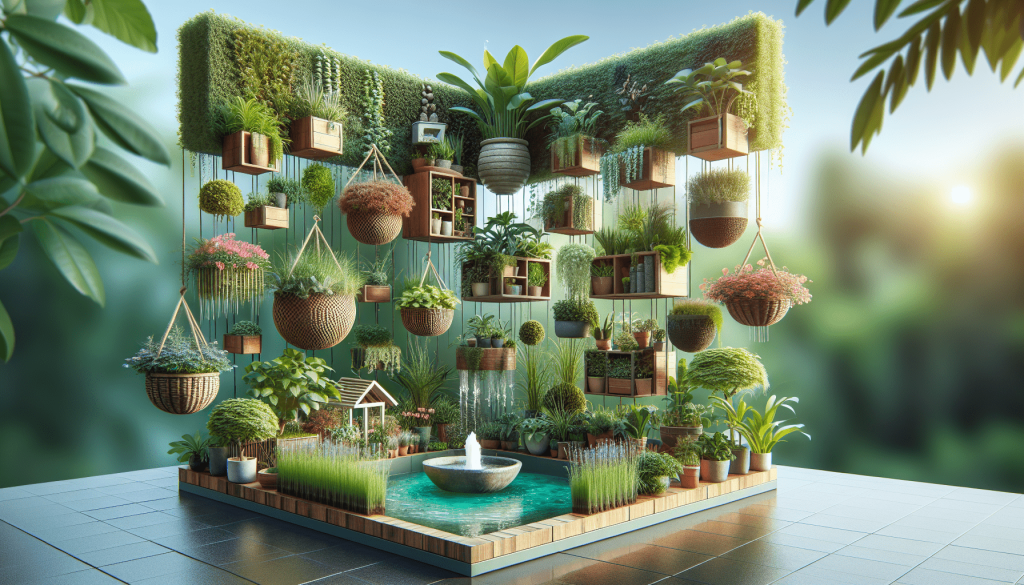
Vertical Gardening
When you’re tight on ground space, why not think vertically? Vertical gardening is a brilliant way to green up your space, utilizing the often-overlooked wall and air space. It’s not just about saving space; it’s also about adding a new dimension to your gardening habits.
Utilizing wall space to grow plants vertically
Imagine transforming a bland wall into a lush, living garden. This is entirely possible with vertical gardening. You can use wall-mounted planters, or even repurpose items like wooden pallets or old shoe organizers to create a vertical garden. This method is perfect for small spaces because it takes advantage of vertical real estate, allowing you to grow herbs, flowers, and even some vegetables without sacrificing floor space.
Incorporating hanging planters for an airy feel
Hanging planters can bring an element of airiness and whimsy to your space. Suspended from the ceiling or wall hooks, these planters can house everything from trailing ivy to succulents, adding layers of greenery at eye-level and above. Hanging planters work particularly well in corners or in front of windows, creating a cozy, garden-like vibe in even the smallest of spaces.
Creating a living wall with a mixture of succulents and herbs
A living wall is not just a way to garden vertically; it’s a piece of living art. By combining succulents, which are low-maintenance and drought-resistant, with various herbs, you create a fragrant, functional, and visually stunning display. Imagine plucking fresh basil or mint right from your wall while cooking. It’s a perfect blend of aesthetics and utility.
Container Gardening
Not every small space can accommodate traditional garden beds, but that’s where container gardening shines. It’s an incredibly versatile way to garden, letting you infuse character, beauty, and productivity into cramped spaces.
Choosing versatile containers that add character
The beauty of container gardening is the vast array of containers you can choose from. Whimsical teapots, rustic barrels, sleek modern pots, or even upcycled items like tin cans can serve as unique homes for your plants. Each container adds its own character to the garden, making the space distinctly yours.
Mixing edible and ornamental plants for a functional display
Who says you have to choose between form and function? In your container garden, you can easily mix edible and ornamental plants, creating a space that is both beautiful and bountiful. Pair brightly colored chard with trailing nasturtiums, or nestle fragrant herbs amongst blooming flowers. This approach not only maximizes your limited space but also creates an appealing, varied display.
Implementing a color scheme to unify the garden’s aesthetic
To make your container garden feel cohesive, consider adopting a color scheme. This could mean choosing containers in similar hues or planting flowers and foliage that complement each other in color. A unified color palette can pull the garden together, creating a visually harmonious space even in the most limited of areas.
Tiered Plant Stands
Tiered plant stands are like multi-story buildings for your plants, allowing you to display a variety of greenery in a compact footprint.
Maximizing space by using levels to display plants
A tiered stand takes up minimal ground space while offering multiple levels for plant display. This means you can have a lush, layered garden in a corner of your balcony or beside your doorstep. It’s a simple yet effective way to add depth and interest to your garden.
Incorporating various plant sizes for depth and interest
To make the most of a tiered stand, vary the sizes and types of plants you use. Larger, bushier plants can anchor the lower tiers, while delicate, trailing varieties can spill gracefully from the upper levels. This variation not only adds visual depth but also allows each plant to shine.
Selecting materials that complement the overall garden style
Tiered plant stands come in materials ranging from wood to metal to recycled plastic. Choose a material that not only supports the weight and needs of your plants but also complements your garden’s style. A rustic wooden stand might suit a cottage-style garden, while sleek, black metal could enhance a more modern space.
Incorporating Water Features
Water features add a serene, calming element to your garden, attracting wildlife and providing a soothing backdrop of sound.
Using small, self-contained water features to add ambiance
Even in small spaces, you can incorporate water features like tabletop fountains or small, self-contained basins. These features add a sense of tranquility and movement to your garden, creating a soothing ambiance that can make any space feel like a retreat.
Integrating water elements that attract wildlife
Water features not only benefit you but can also attract wildlife such as birds, butterflies, and beneficial insects. A birdbath or a small, shallow pond can provide a vital water source for these creatures, helping to create a more dynamic and ecologically rich garden space.
Selecting water plants for a mini aquatic garden
If you include a water feature, why not take it a step further with water plants? Dwarf water lilies, water lettuce, and floating heart create visual interest and provide habitat for aquatic wildlife. A mini aquatic garden can be a fascinating, low-maintenance addition to your space.
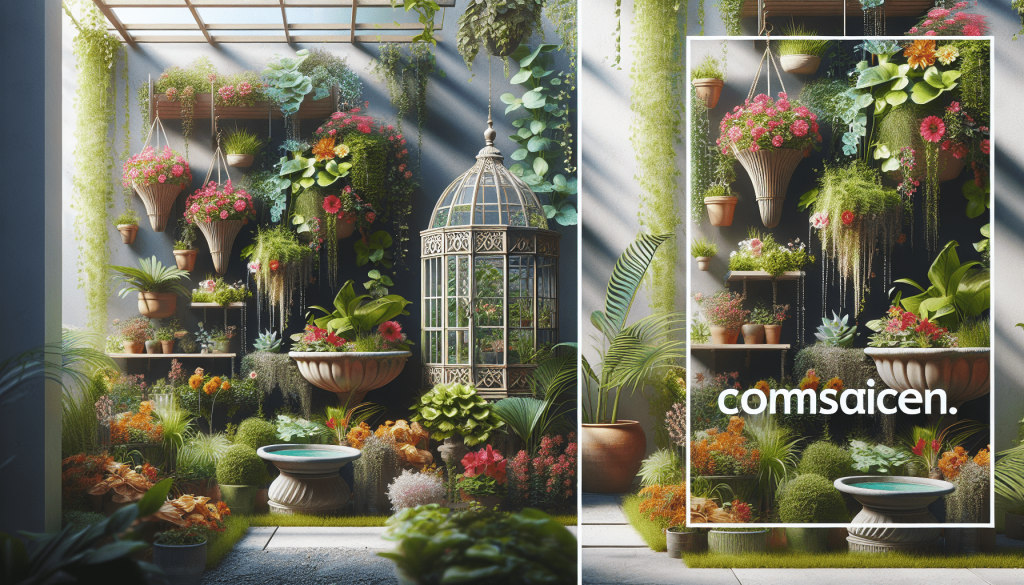
Edible Gardens
Creating an edible garden in a small space is not only possible but also incredibly rewarding. You can enjoy fresh, homegrown produce even from the smallest balcony or patio.
Designing creative herb gardens in limited spaces
Herbs are wonderfully versatile and can be grown in almost any container or vertical garden setup. Consider a hanging planter filled with parsley, cilantro, and basil or a wall-mounted system for a constant supply of fresh herbs. Herbs require little space and can thrive in pots, making them perfect for small space gardening.
Growing vertical vegetable gardens
Vertical gardening techniques can also be applied to vegetables. Use trellises for climbing plants like beans and cucumbers, or vertical planters for lettuces, spinach, and other greens. With some creativity, you can produce a significant amount of food in a surprisingly small area.
Incorporating companion planting to maximize yield
Companion planting is a strategic way to maximize the productivity of your edible garden. By planting certain crops together, you can deter pests, improve pollination, and enhance plant growth. For example, planting basil near your tomatoes not only saves space but can also improve the flavor and growth of both plants.
Japanese Zen Gardens
Zen gardens are designed to evoke tranquility and reflection. Even in small spaces, you can capture the essence of a Japanese Zen garden.
Creating a minimalist garden with a focus on tranquility
A Zen garden in a small space should focus on simplicity and natural elements. Use sand or fine gravel as a base and create patterns that mimic water ripples or waves. This minimalist approach can make even the smallest space feel serene and expansive.
Using sand or gravel as a base for a reflective space
The use of sand or gravel not only simplifies maintenance but also serves as a canvas for your creativity. Raking these materials into various patterns can be a calming, meditative practice, helping to foster a sense of peace and mindfulness in your garden.
Incorporating stone elements and dwarf plants for scale
Stone elements, whether as larger boulders or smaller accents, add a sense of permanence and natural beauty to your Zen garden. Complement these with dwarf plants or bonsai to maintain scale and contribute to the overall sense of tranquility and simplicity.
Fairy Gardens
Fairy gardens invite whimsy and fantasy into your outdoor space, captivating the imaginations of both adults and children alike.
Crafting magical miniature landscapes in pots
You can create a fairy garden in virtually any container, from large pots to old wheelbarrows. Populate your miniature landscape with small-scale plants, fairy houses, tiny furniture, and other magical accessories. Each element contributes to the narrative of your fairy garden, making it a captivating and enchanting feature.
Using small-scale plants and accessories to tell a story
Choosing the right plants and accessories is key to creating an immersive fairy garden. Select small-scale plants that mimic full-sized trees, bushes, and lawns. Add pathways, bridges, and miniature houses to bring your fairy tale to life. Each detail adds depth and interest, encouraging viewers to lean in and explore.
Incorporating lighting to enhance the whimsical feel at night
To make your fairy garden truly magical, incorporate small LED lights or solar-powered lanterns. Lighting can transform your fairy garden at night, casting enchanting shadows and highlighting the intricate details of your miniature landscape. It’s a simple touch that can extend the enjoyment of your fairy garden into the evening hours.
Succulent Gardens
Succulents are incredibly versatile and drought-tolerant, making them ideal for low-maintenance gardens in small spaces.
Designing with drought-tolerant plants for easy maintenance
Succulents come in a wide variety of shapes, sizes, and colors, offering endless possibilities for creative arrangements. They require minimal water and can thrive in shallow containers, making them perfect for small, easy-to-maintain gardens.
Creating arrangements in shallow containers and terrariums
Shallow containers and terrariums are ideal homes for succulents, allowing you to create intricate landscapes with minimal soil. These arrangements can stand as unique, living sculptures in your space, adding visual interest with very little upkeep required.
Layering textures and colors for visual impact
One of the joys of working with succulents is the variety of textures and colors at your disposal. By thoughtfully arranging plants with contrasting shapes, textures, and hues, you can create striking visual displays. A palette of blue-hued Echeverias against the soft, fluffy texture of a Sempervivum, for example, can add a vibrant splash of life to any small space.
Rooftop Gardens
If you have access to a rooftop, transforming it into a garden can provide a peaceful escape and a unique green space in the heart of the city.
Optimizing rooftop space for relaxing and growing plants
Rooftop gardens offer a secluded spot for relaxation and a unique environment for gardening. Choose containers and raised beds to house your plants, ensuring they are secure against the elements. Incorporate seating areas where you can unwind and enjoy the fruits of your labor amidst the skyline.
Choosing wind and sun-tolerant plants
Rooftop gardens are exposed to more wind and sun than ground-level gardens. Select plants that thrive under these conditions, such as lavender, sedums, and ornamental grasses. These hardy varieties will ensure your rooftop oasis remains vibrant and lush.
Incorporating seating and social areas
Make the most of your rooftop garden by incorporating areas for seating and socializing. Comfortable chairs, a dining table, or even a hammock can turn your rooftop into an ideal spot for entertaining or simply relaxing under the sky. With thoughtful planning, a rooftop garden can become an invaluable extension of your living space.
Reflection and Meditation Spaces
Creating a dedicated space for reflection and meditation can provide a tranquil refuge from the hustle and bustle of daily life.
Designing a quiet corner with comfortable seating for relaxation
Choose a secluded corner of your garden or balcony where you can set up a comfortable seating area. This could be a cushioned bench, a rocking chair, or a simple mat on the ground. Surround this area with calming elements like soft foliage, fragrant flowers, or a small water feature to enhance the sense of peace and solitude.
Incorporating elements such as a small fountain or wind chimes
Small fountains or wind chimes can add a soothing auditory element to your meditation space. The sound of water or the gentle tinkle of chimes in the breeze can help you focus and relax, facilitating deeper meditation or reflection.
Using fragrant plants to enhance the sensory experience
Fragrant plants like lavender, jasmine, or rosemary can greatly enrich the sensory experience of your reflection space. Their scents can calm the mind, reduce stress, and enhance the overall sense of tranquility in your garden. Consider planting these around your meditation area or in containers nearby to make your moments of reflection even more profound.
Creating a garden in a small space is not only possible but can also be incredibly rewarding. Whether it’s a vertical garden on your balcony wall, a tabletop water feature for your patio, or a tranquil corner dedicated to meditation, there are countless ways to make even the tiniest spaces lush, productive, and utterly enchanting. With some creativity and thoughtful planning, your small space garden can become a cherished oasis of beauty and tranquility.

